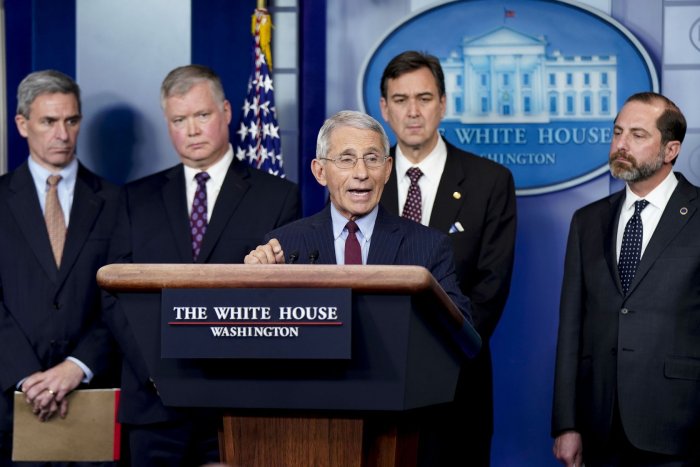1 of 5 | New research shows that states with mask mandates saw fewer cases of the coronavirus spread last year. File Photo by John Angelillo/UPI |
License Photo
April 14 (UPI) -- States that required residents to wear masks in public spaces during the height of the COVID-19 pandemic last year saw lower infection rates than those without mandates, a study published Wednesday by PLOS ONE found.
None of the eight states that reported rates of compliance with mask mandates of 75% or higher during summer and early fall 2020 experienced high numbers of infections through the end of October, the data showed.
Conversely, 14 of 15 states that did not require people to wear masks in public during the same period had high infection rates then, the researchers said.
The findings provide new evidence in support of mask-wearing as a major factor that contributes to reduced COVID-19 infection rates, according to the researchers.
"This protective effect of mask wearing was evident across four months of the pandemic," the researchers wrote.
Since the start of the pandemic last March, public health officials, including those with the U.S. Centers for Disease Control and Prevention, have recommended that people wear masks that cover their nose and mouth to limit spread of the coronavirus.
The virus spreads primarily through respiratory droplets -- fluid emitted from the nose and mouth while breathing or speaking -- and passes from an infected person to others through the air. But masks can limit at least some of this transmission, research indicates.
Although surveys have found that most people in the United States support wearing face coverings as part of measures designed to contain the pandemic, a vocal minority has protested, citing individual rights.
Still, some states have imposed "mask mandates" that require people to wear masks when in public, such as when visiting stores or attending work or school.
For this study, the researchers from Boston University's School of Public Health analyzed COVID-19 case data in all 50 states and Washington, D.C., between May and October 2020.
During that period, eight states with high COVID-19 rates -- Arizona, Connecticut, Hawaii, Massachusetts, Michigan, New York, Rhode Island and Vermont -- had mask mandates in place at some point, and reported compliance with the mandates at 75% or more.
When the mandates were in effect, these states had an average COVID-19 infection rate of about 110 per 100,000 people in the general population during the study period, the data showed.
Of states with high COVID-19 rates that at some point did not require residents to wear masks -- including Arizona, Florida, Georgia, Idaho, Iowa, Missouri, Montana, Nebraska, New Hampshire, North Dakota, Oklahoma, South Carolina, South Dakota, Tennessee and Wyoming -- all but Nebraska reported high infection rates during the study period.
States with lower mask compliance, or fewer than 25% of people wearing coverings in public, had about 240 cases per 100,000 people in the general population, the data showed.
Policies and public health efforts to reduce the spread of COVID-19 should include a focus on improved mask adherence throughout the U.S., the researchers said.
"Our observation that states with mask adherence of more than 75% of the population was associated with lower COVID-19 rates in the subsequent month suggests that states should strive to meet this threshold," they wrote.
January 31, 2020
National Institutes of Health official Dr. Anthony Fauci (C) speaks about the coronavirus during a press briefing at the White House in Washington, D.C. Health and Human Services Secretary Alexander Azar (L) announced that the United States is declaring the virus a public health emergency and issued a federal quarantine order of 14 days for 195 Americans. Photo by Leigh Vogel/UPI |
License Photo
















